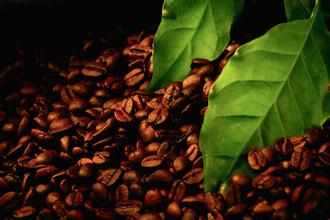The cultivation of boutique coffee beans in Africa's most famous Yega Ficher Manor

Yegashefi is a small town, 700-2100 meters above sea level, synonymous with Ethiopian fine coffee. It is a wetland since ancient times, and the old saying "Yirga" means "settle down" and "Cheffe" means "wetland". The way coffee is produced and the flavor is so prominent that Ethiopian coffee farmers compete to be proud of their coffee with Yegashfi flavor, which has become Africa's most famous coffee producing area.
At first, the coffee trees in Yegashefi were planted by European monks, but later by farmers or cooperatives. Yegashefi is actually formed by surrounding coffee communities or cooperatives, which generally include: Hafusa, Hama, and Biloa.
These mountain villages are foggy, spring all year round, cool but not hot in summer, rain but not damp in winter, and they breed unique regional flavors of citrus and flowers. Most coffee trees were planted in farmers 'backyards or mixed with other crops in the field. The coffee trees of Yeshifi were planted by European monks (a bit like Belgian monks growing wheat to brew beer), and later by farmers or cooperatives. Yega Shefi is actually constructed by surrounding coffee communities or cooperatives, including Idido, Harfusa, Hama, and Biloa near Misty Valley, all washed, but a small number of unique beans are deliberately sunburned to enhance the charming fruity flavor and body. These mountain villages are foggy, spring all year round, cool but not hot in summer, rain but not damp in winter, and they have a unique regional flavor of citrus and flowers. Coffee trees are mostly planted in farmers 'backyards or mixed with other crops in the field. The yield per household is not much. It is a typical pastoral coffee. The Yejia Shefei award-winning beans are almost from the above coffee villages and communities
Under all kinds of green bean treatments, yejiachephine could express personality characteristics and maintain obvious flavor amplitude. Its price rises year after year, but the price is still not expensive. We don't know much about the life of Ethiopian coffee farmers. Are they doing well? Sometimes we are "stupid": Blue Mountain coffee is really good, it is this price, and the surrounding Blue Mountain has that price. But yega is also excellent, but the price difference is so much? Coffee, like people, is made by circumstances. Although it cannot enter the eyes of local tyrants, it is also beneficial to the common people who understand it. Can drink Ye Jia, rose summer, why envy what cat feces 1, must smell dry incense (just ground out of coffee powder), flowers smell wood?
2, try not to add milk and sugar, with a normal heart, look at it as a whole fresh, sour and sweet flavor
3. After cooling, whether there is any popularity of sweet potato flavor is largely influenced by the trend of fine coffee since the millennium. Its floral fruity, citrus flavours set the tone for a rebellious flavor. With the popularity of Italian heavy roasting, the majority of consumers have never defined sour coffee flavor, let alone citrus flavor, fruit flavor. Today, it has become an entry-level variety of coffee tasting, a representative of floral fruit coffee, and even a representative of African coffee. At the same time, Yega foreshadowed Kenya coffee's rich berry, apple and fruit acidity, which later dominated the fine coffee world, and then rose summer had an even more stunning appearance
In 1959, the Yega sherry producing area began to try washing treatment method. After 1970, the jasmine flower fragrance and lemon citrus flavor of Yega were popular in Europe and America, becoming a model of African fine beans. The sun treatment method and sherry gradually drifted away.
However, there are always people who will miss the wonderful wine rhyme under the sun method, the feeling of no trace of wind, the improved sun counterattack in 2006, in the second "Gold Cooperative Coffee Competition" held in Ethiopia, the sun beans dominated the top three, and the pain washed Yejia.
Now, the delicate solarization method is maturing. High standards eliminate bad coffee beans, reduce pollution sources, elevated net bed, special guard, uniform drying. Rich strawberry, citrus, peach, jasmine fragrance, red wine melodious all the way to burst red so far
In December 1994, the Constitution of the Federal Democratic Republic of Ethiopia was enacted. The constitution stipulates that Ethiopia will adopt a federal system and a parliamentary cabinet system after the election, with a term of office of five years. National elections were held in May 1995. On August 22, the Federal Democratic Republic of Ethiopia was established. Meles became Prime Minister as Chairman of the Majority Party in the House of People's Representatives. On May 14, 2000, Ethiopia held a national election, in which the Ethiopian Revolutionary Front defeated other opposition parties by an absolute majority to retain power. In October, a new federal parliament and government were established. The presidents of both houses and Prime Minister Meles were elected for re-election. The original cabinet was also retained with the approval of the parliament. In October 2001, Mei adjusted the government structure and reshuffled the cabinet, adding the Ministry of Youth, Sports and Culture and the Ministry of Taxation, and established a new cabinet composed of 18 ministers. Ethiopia is rectangular in shape, with a ratio of length to width of 3:2. From top to bottom by green, yellow, red three parallel equal horizontal rectangle composition, flag surface middle has the national emblem pattern. Since the late 19th century, Ethiopia has adopted a green, yellow and red striped flag. Ethiopia was the first African country in modern history to join the ranks of free peoples. [8]
By the 1950s and 1960s, many African countries had become independent one after another, and they adopted green, yellow and red as their national flags, so they were called "pan-African colors". Ethiopia is one of the ancient African countries, with a long history of more than 3000 years, giving green, yellow and red three colors a deeper origin in this land. Historically, they have been associated with the liturgy of the Coptic Church, enshrined as symbols of the Trinity of the Father, the Son and the Holy Spirit, embodying the three virtues of loyalty, hope and mercy advocated by human freedom. These three colors also represent three regions of Ethiopia: Tikrit (red), Amhara (yellow), and Theoya (green). Green represents fertile land, mild climate and abundant plant resources, and also symbolizes hope for the future; yellow symbolizes peace and fraternity, and also represents the people's determination to build the country; red symbolizes that the people are ready to shed blood to defend the motherland.
Ethiopia's Yirgacheffe coffee is petite, but gentle and sweet. As the home of coffee, Ethiopia's millennia of growing and processing traditions have resulted in high-quality washed Arabica beans. Light baked with unique lemon, floral and honey sweet aromas, soft fruit acids and citrus notes, fresh and bright taste. No milk, no sugar, let the rich texture and unique soft floral brush your taste buds, leaving endless aftertaste…
Important Notice :
前街咖啡 FrontStreet Coffee has moved to new addredd:
FrontStreet Coffee Address: 315,Donghua East Road,GuangZhou
Tel:020 38364473
- Prev

A brief introduction to the Market Price of Fine Coffee Bean varieties in the fresh and bright Yega Fischer Manor
Although the Ethiopian Yirgacheffe coffee is petite, it is gentle and delicate and sweet. As the hometown of coffee, thousands of years of planting history and processing tradition in Ethiopia have created high-quality washed Arabica beans. Light baking has unique sweet aromas of lemon, flowers and honey, soft acidity and citrus flavors, fresh and bright on the palate. No.
- Next

The unique mellow coffee beans from Xidamasha Chiso producing area of Ethiopia have a special flavor and taste.
Sidamo Coffee beans are grayish, thick in some places and small in others, with soft and strong acidity, mellow and sweet and spicy. It is one of the courtyard coffees in the highlands of southern Ethiopia. It is different from ordinary African coffee in that Sidamo has clear acidity, smooth taste and delicate floral flavor. Different soil
Related
- Does Rose Summer choose Blue, Green or Red? Detailed explanation of Rose Summer Coffee plots and Classification in Panamanian Jade Manor
- What is the difference between the origin, producing area, processing plant, cooperative and manor of coffee beans?
- How fine does the espresso powder fit? how to grind the espresso?
- Sca coffee roasting degree color card coffee roasting degree 8 roasting color values what do you mean?
- The practice of lattes: how to make lattes at home
- Introduction to Indonesian Fine Coffee beans-- Java Coffee producing area of Indonesian Arabica Coffee
- How much will the flavor of light and medium roasted rose summer be expressed? What baking level is rose summer suitable for?
- Introduction to the characteristics of washing, sun-drying or wet-planing coffee commonly used in Mantenin, Indonesia
- Price characteristics of Arabica Coffee Bean Starbucks introduction to Manning Coffee Bean Taste producing area Variety Manor
- What is the authentic Yega flavor? What are the flavor characteristics of the really excellent Yejasuffi coffee beans?

